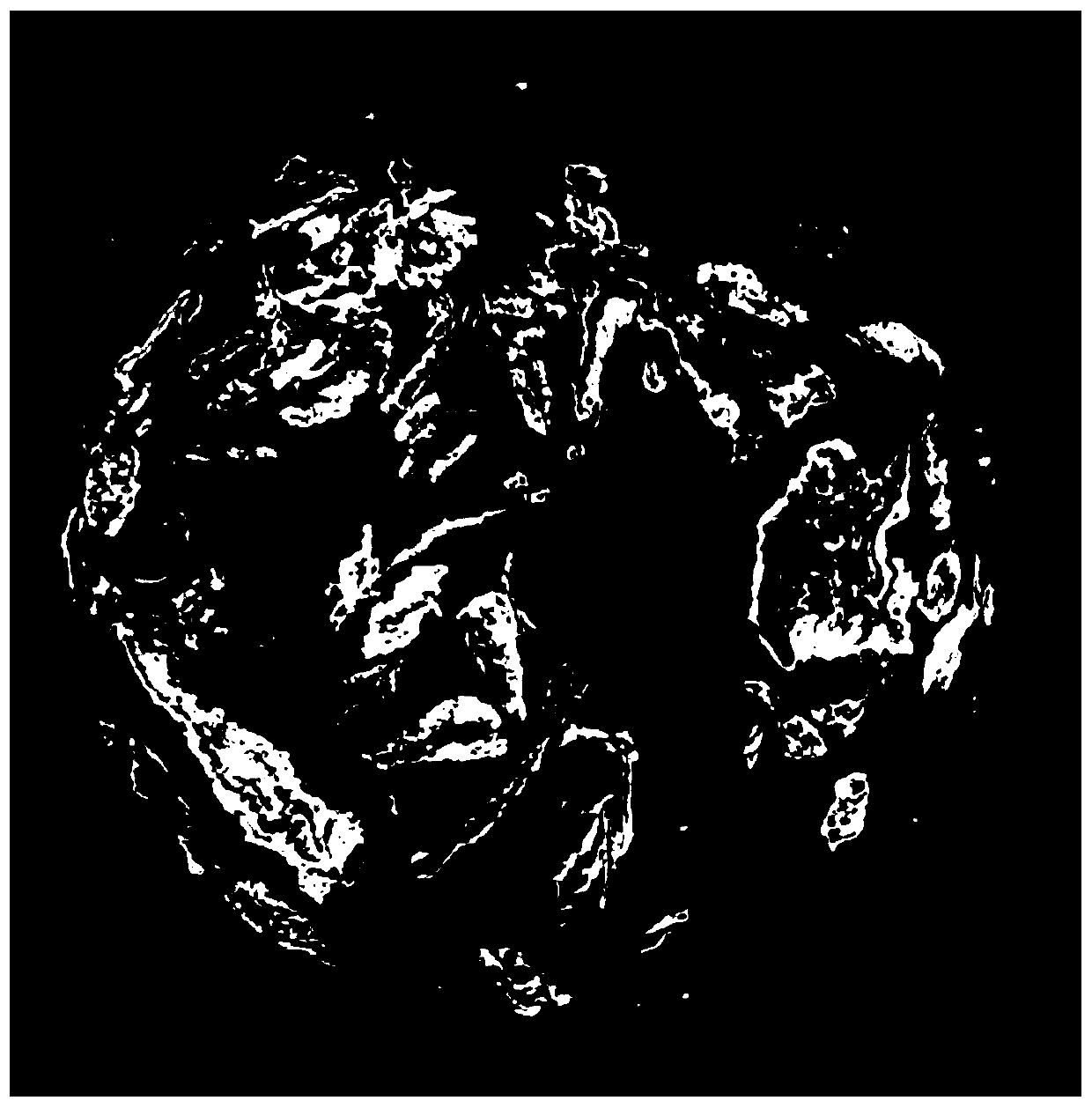Method for quantitatively measuring spatial structure of soil particulate organic matters
A soil particle and spatial structure technology, applied in the field of soil research, can solve the problems of difficult quantitative measurement, complex structure, random distribution, etc.
- Summary
- Abstract
- Description
- Claims
- Application Information
AI Technical Summary
Problems solved by technology
Method used
Image
Examples
Embodiment 1
[0029] 1. Wet sieving and classifying to extract aggregates in soil
[0030] Collect soil samples from the reed growth area in the coastal wetlands of the Yellow River Delta, accurately weigh 20g of soil samples into a 100mL centrifuge tube, slowly add water to infiltrate, and the water-to-soil ratio is about 2:1. Unstable, the aggregates collapse, destroying its stability. Then invert the centrifuge tube below the water surface in the 2mm sieve (the lower layer of the 2mm sieve is placed in sequence with 250 μm and 53 μm sieves) until the soil sample completely sinks into the sieve. Move the sieve up and down, 3cm / time, 25 times / min. Through wet sieving classification to obtain macro-aggregate samples with a particle size of 250-2 000 μm and micro-aggregate samples with a particle size of 53-250 μm, the granular organic matter is further separated;
[0031] 2. Density extraction method to extract granular organic matter
[0032] With a density of 1.85g / cm 3 Density fracti...
PUM
| Property | Measurement | Unit |
|---|---|---|
| particle diameter | aaaaa | aaaaa |
Abstract
Description
Claims
Application Information
 Login to View More
Login to View More - R&D
- Intellectual Property
- Life Sciences
- Materials
- Tech Scout
- Unparalleled Data Quality
- Higher Quality Content
- 60% Fewer Hallucinations
Browse by: Latest US Patents, China's latest patents, Technical Efficacy Thesaurus, Application Domain, Technology Topic, Popular Technical Reports.
© 2025 PatSnap. All rights reserved.Legal|Privacy policy|Modern Slavery Act Transparency Statement|Sitemap|About US| Contact US: help@patsnap.com



